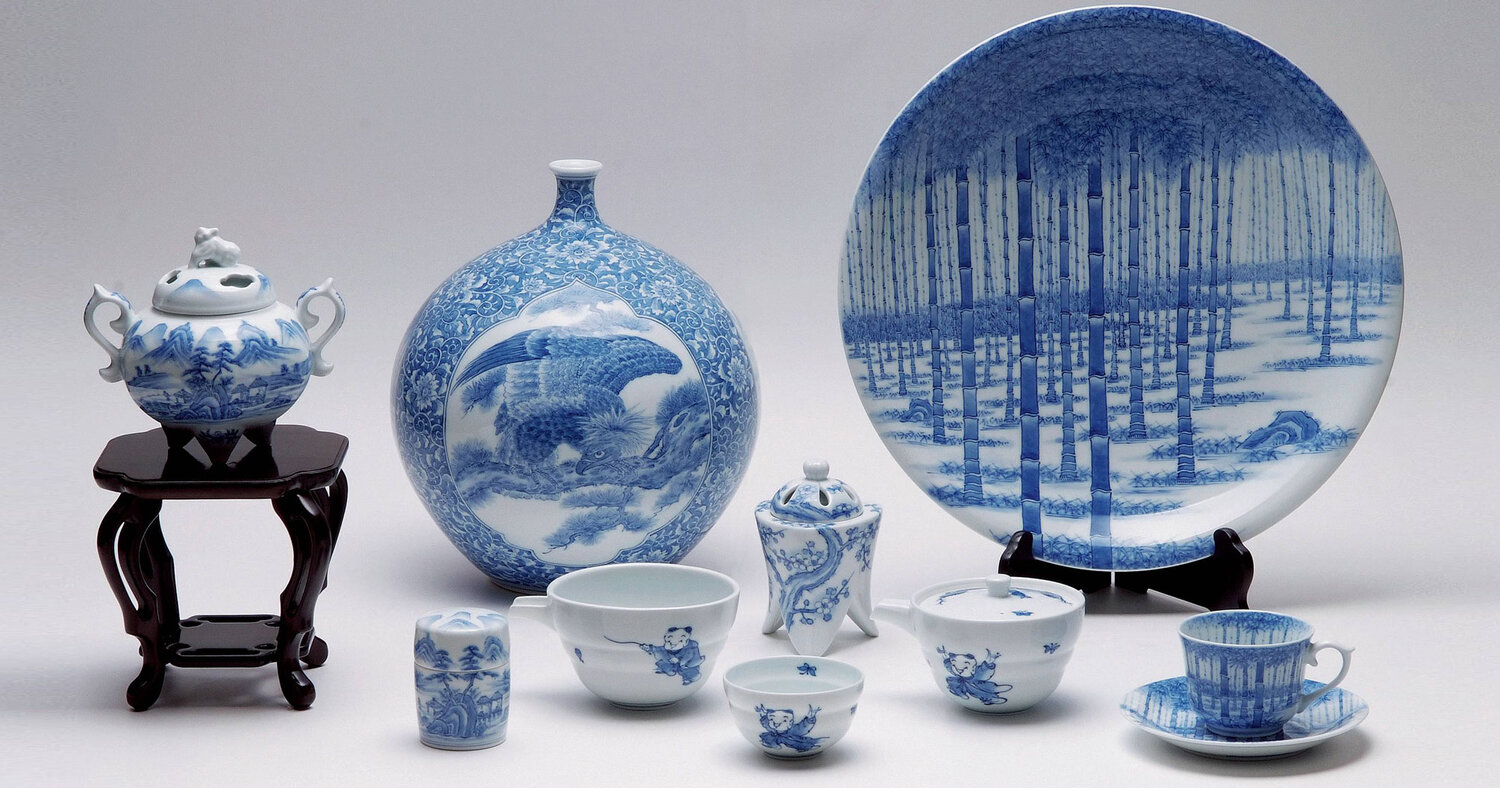A ceramic is any of the various hard, brittle, heat-resistant, and corrosion-resistant materials made by shaping and then firing an inorganic, nonmetallic material, such as clay, at a high temperature. Common examples are earthenware, porcelain, and brick.
The earliest ceramics made by humans were pottery objects (pots, vessels, or vases) or figurines made from clay, either by itself or mixed with other materials like silica, hardened and sintered in fire. Later, ceramics were glazed and fired to create smooth, colored surfaces, decreasing porosity through the use of glassy, amorphous ceramic coatings on top of the crystalline ceramic substrates. Ceramics now include domestic, industrial, and building products, as well as a wide range of materials developed for use in advanced ceramic engineering, such as semiconductors.
The word ceramic comes from the Ancient Greek word κεραμικός (keramikós), meaning "of or for pottery" (from κέραμος (kéramos) 'potter's clay, tile, pottery'). The earliest known mention of the root ceram- is the Mycenaean Greek ke-ra-me-we, workers of ceramic, written in Linear B syllabic script. The word ceramic can be used as an adjective to describe a material, product, or process, or it may be used as a noun, either singular or, more commonly, as the plural noun ceramics.
Pottery is the process and the products of forming vessels and other objects with clay and other raw materials, which are fired at high temperatures to give them a hard and durable form. The place where such wares are made by a potter is also called a pottery (plural potteries). The definition of pottery, used by the ASTM International, is "all fired ceramic wares that contain clay when formed, except technical, structural, and refractory products". End applications include tableware, decorative ware, sanitaryware, and in technology and industry such as electrical insulators and laboratory ware. In art history and archaeology, especially of ancient and prehistoric periods, pottery often means vessels only, and sculpted figurines of the same material are called terracottas.
Pottery is one of the oldest human inventions, originating before the Neolithic period, with ceramic objects such as the Gravettian culture Venus of Dolní Věstonice figurine discovered in the Czech Republic dating back to 29,000–25,000 BC, and pottery vessels that were discovered in Jiangxi, China, which date back to 18,000 BC. Early Neolithic and pre-Neolithic pottery artifacts have been found, in Jōmon Japan (10,500 BC), the Russian Far East (14,000 BC), Sub-Saharan Africa (9,400 BC), South America (9,000s–7,000s BC), and the Middle East (7,000s–6,000s BC).
Pottery is made by forming a clay body into objects of a desired shape and heating them to high temperatures (600–1600 °C) in a bonfire, pit or kiln, which induces reactions that lead to permanent changes including increasing the strength and rigidity of the object. Much pottery is purely utilitarian, but some can also be regarded as ceramic art. An article can be decorated before or after firing.
Pottery is traditionally divided into three types: earthenware, stoneware and porcelain. All three may be glazed and unglazed. All may also be decorated by various techniques. In many examples the group a piece belongs to is immediately visually apparent, but this is not always the case; for example fritware uses no or little clay, so falls outside these groups. Historic pottery of all these types is often grouped as either "fine" wares, relatively expensive and well-made, and following the aesthetic taste of the culture concerned, or alternatively "coarse", "popular", "folk" or "village" wares, mostly undecorated, or simply so, and often less well-made.
Cooking in pottery became less popular once metal pots became available, but is still used for dishes that benefit from the qualities of pottery cooking, typically slow cooking in an oven, such as biryani, cassoulet, daube, tagine, jollof rice, kedjenou, cazuela and types of baked beans.


